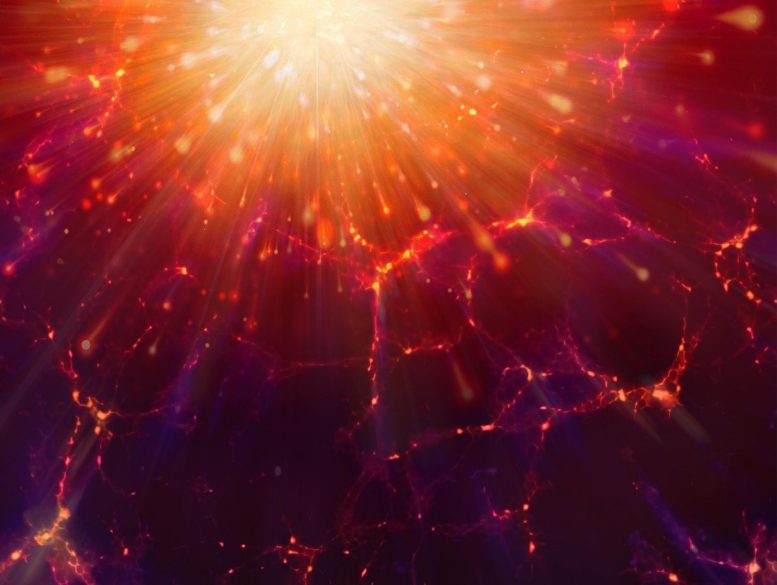
Physicists have proposed a new interpretation of dark energy. It could shed insight on the interconnection between quantum field theory and general relativity theory, as two perspectives on the universe and its elements.
What is behind dark energy — and what connects it to the cosmological constant introduced by Albert Einstein? Two physicists from the University of Luxembourg point the way to answering these open questions of physics.
The universe has a number of bizarre properties that are difficult to understand with everyday experience. For example, the matter we know, consisting of elementary and composite particles building molecules and materials, apparently makes up only a small part of the energy of the universe. The largest contribution, about two-thirds, comes from “dark energy” – a hypothetical form of energy whose background physicists are still puzzling over. Moreover, the universe is not only expanding steadily, but also doing so at an ever-faster pace.
Both characteristics seem to be connected, because dark energy is also considered a driver of accelerated expansion. Moreover, it could reunite two powerful physical schools of thought: quantum field theory and the general theory of relativity developed by Albert Einstein. But there is a catch: calculations and observations have so far been far from matching. Now two researchers from Luxembourg have shown a new way to solve this 100-year-old riddle in a paper published by the journal Physical Review Letters.
The trail of virtual particles in a vacuum
“Vacuum has energy. This is a fundamental result of quantum field theory,” explains Prof. Alexandre Tkatchenko, Professor of Theoretical Physics at the Department of Physics and Materials Science at the University of Luxembourg. This theory was developed to bring together quantum mechanics and special relativity, but quantum field theory seems to be incompatible with general relativity. Its essential feature: in contrast to quantum mechanics, the theory considers not only particles but also matter-free fields as quantum objects.
“In this framework, many researchers regard dark energy as an expression of the so-called vacuum energy,” says Tkatchenko: a physical quantity that, in a vivid image, is caused by a constant emergence and interaction of pairs of particles and their antiparticles — such as electrons and positrons — in what is actually empty space.
Physicists speak of this coming and going of virtual particles and their quantum fields as vacuum or zero-point fluctuations. While the particle pairs quickly vanish into nothingness again, their existence leaves behind a certain amount of energy.
“This vacuum energy also has a meaning in general relativity,” the Luxembourg scientist notes: “It manifests itself in the cosmological constant Einstein included into his equations for physical reasons.”
A colossal mismatch
Unlike vacuum energy, which can only be deduced from the formulae of quantum field theory, the cosmological constant can be determined directly by astrophysical experiments. Measurements with the Hubble space telescope and the Planck space mission have yielded close and reliable values for the fundamental physical quantity. Calculations of dark energy on the basis of quantum field theory, on the other hand, yield results that correspond to a value of the cosmological constant that is up to 10120 times larger – a colossal discrepancy, although in the world view of physicists prevailing today, both values should be equal. The discrepancy found instead is known as the “cosmological constant enigma.”
“It is undoubtedly one of the greatest inconsistencies in modern science,” says Alexandre Tkatchenko.
Unconventional way of interpretation
Together with his Luxembourg research colleague Dr. Dmitry Fedorov, he has now brought the solution to this puzzle, which has been open for decades, a significant step closer. In a theoretical work, the results of which they recently published in Physical Review Letters, the two Luxembourg researchers propose a new interpretation of dark energy. It assumes that the zero-point fluctuations lead to a polarizability of the vacuum, which can be both measured and calculated.
“In pairs of virtual particles with an opposite electric charge, it arises from electrodynamic forces that these particles exert on each other during their extremely short existence,” Tkatchenko explains. The physicists refer to this as a vacuum self-interaction. “It leads to an energy density that can be determined with the help of a new model,” says the Luxembourg scientist.
Together with his research colleague Fedorov, they developed the basic model for atoms a few years ago and presented it for the first time in 2018. The model was originally used to describe atomic properties, in particular the relation between polarizability of atoms and the equilibrium properties of certain non-covalently bonded molecules and solids. Since the geometric characteristics are quite easy to measure experimentally, polarizability can also be determined via their formula.
“We transferred this procedure to the processes in the vacuum,” explains Fedorov. To this end, the two researchers looked at the behavior of quantum fields, in particular representing the “coming and going” of electrons and positrons. The fluctuations of these fields can also be characterized by an equilibrium geometry which is already known from experiments. “We inserted it into the formulas of our model and in this way ultimately obtained the strength of the intrinsic vacuum polarization,” Fedorov reports.
The last step was then to quantum mechanically calculate the energy density of the self-interaction between fluctuations of electrons and positrons. The result obtained in this way agrees well with the measured values for the cosmological constant. This means: “Dark energy can be traced back to the energy density of the self-interaction of quantum fields,” emphasizes Alexandre Tkatchenko.
Consistent values and verifiable forecasts
“Our work thus offers an elegant and unconventional approach to solving the riddle of the cosmological constant,” sums up the physicist. “Moreover, it provides a verifiable prediction: namely, that quantum fields such as those of electrons and positrons do indeed possess a small but ever-present intrinsic polarization.”
This finding points the way for future experiments to detect this polarization in the laboratory as well, say the two Luxembourg researchers. “Our goal is to derive the cosmological constant from a rigorous quantum theoretical approach,” emphasizes Dmitry Fedorov. “And our work contains a recipe on how to realize this.”
He sees the new results obtained together with Alexandre Tkatchenko as the first step toward a better understanding of dark energy — and its connection to Albert Einstein’s cosmological constant.
Finally, Tkatchenko is convinced: “In the end, this could also shed light on the way in which quantum field theory and general relativity theory are interwoven as two ways of looking at the universe and its components.”
Reference: “Casimir Self-Interaction Energy Density of Quantum Electrodynamic Fields” by Alexandre Tkatchenko and Dmitry V. Fedorov, 24 January 2023, Physical Review Letters.
DOI: 10.1103/PhysRevLett.130.041601

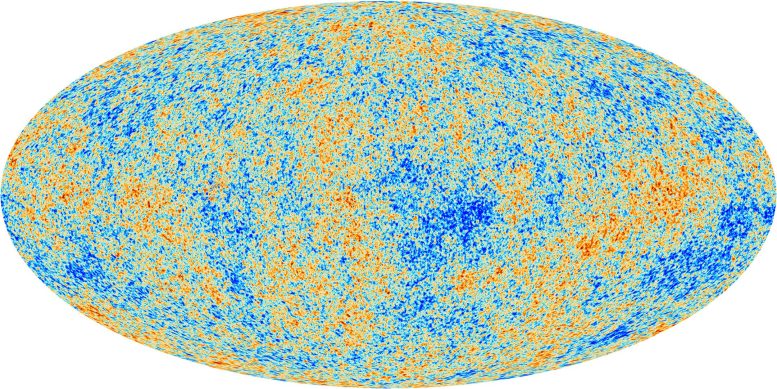
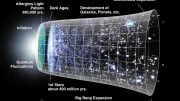


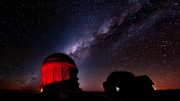
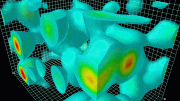
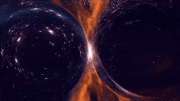
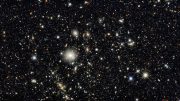

So now we’re back to the cosmological constant, eh?
Another way to explain Dark Energy is suggested by String Theory. All matter and energy, including photons (light), have vibrating strings as their basis.
String and anti-string pairs are speculated to be created in the quantum foam, a roiling energy field suggested by quantum mechanics, and they immediately annihilate each other. If light passes near these string/anti-string annihilations, perhaps some of that annihilation energy is absorbed by the string in the light. Then the Fraunhofer lines in that light will move a bit towards the blue and away from the red shift. As this continues in an expanding universe we get the same curve displayed by Perlmutter and colleagues at their Nobel Prize lecture, without the need for Dark Energy.
This speculation has the universe behaving in a much more direct way. Specifics on this can be found by searching YouTube for “Dark Energy – a String Theory Way”
I would be happy to read the peer-reviewed papers that you have published on this, and would be honored to nominate you for the Nobel prize for physics. Unfortunately, Youtube videos are the domain of crackpots, so I won’t bother looking in to some demagogue’s videos.
This is nothing but gaslighting. Dirt poor Physicist trolling for grants. just sayin’…..
If we consider the mass of your mom, we wouldn’t need dark matter to explain Milkyway’s rotation speeds. Just sayin’…
Cosmologicl Constant is a ferfect Quantum property can be calculated by theory.This appears in ĢR.
The cosmological constant is important as this gives pure quantum property.This is generated from pairs of unit opposite electric
charges interacting in vaccum between any two galaxies.Though this is a typical force of matter with quantum origin,is used in GR fòr formulation of force of gravity.But,this term’s contribution can be noted.The same fact can be derived by a theory of sole quantum property of the matter,thus with this as an aspect.
I propose that the expanding vacuum is creating dark energy. Vacuum expansion creates energy Ve=E.